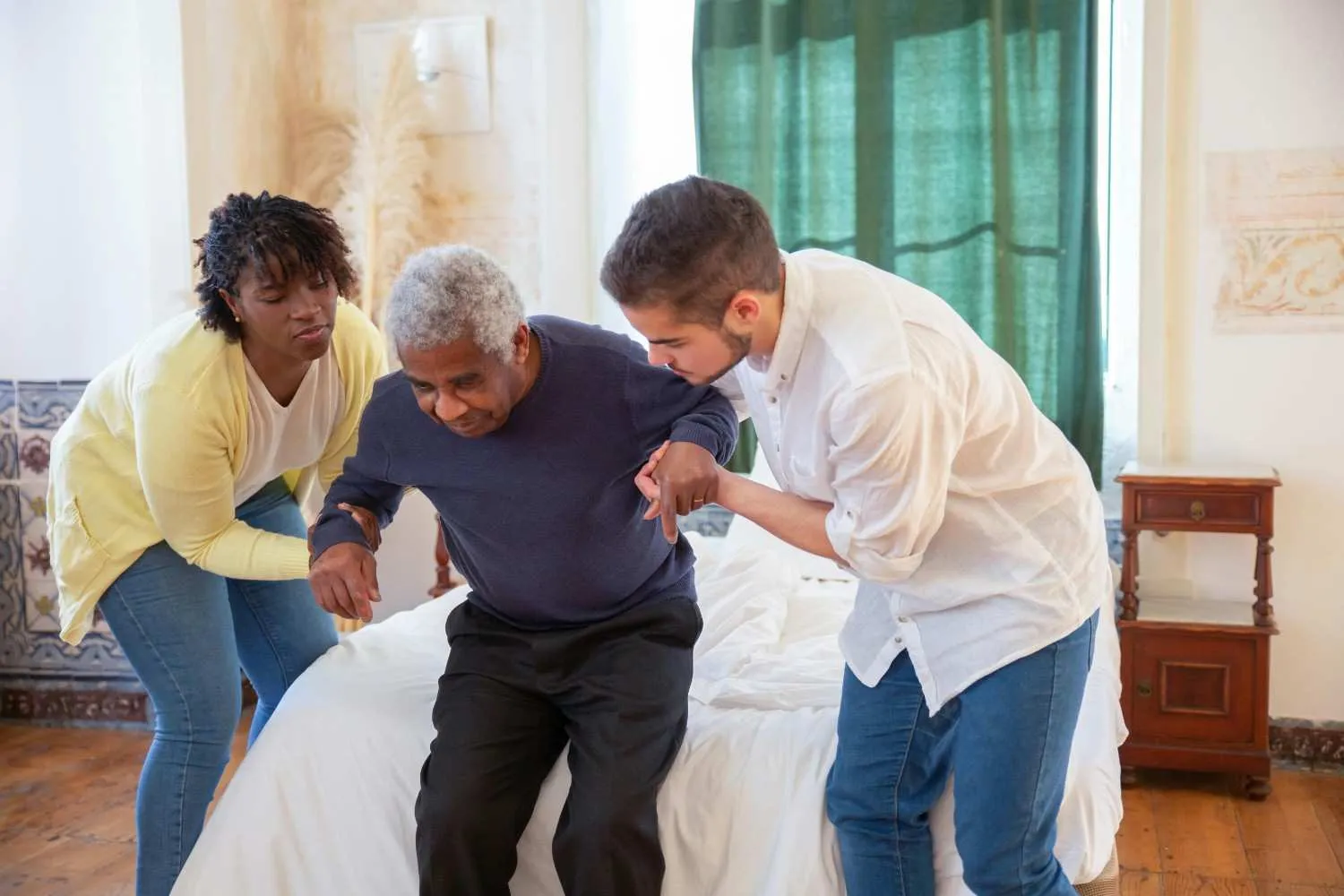Have you ever tossed and turned all night, even without an abdominal wound? Now imagine doing it with stitches and a newborn beside you. Recovery after a C-section is rough. Sleep becomes more than just rest; it’s part of your healing. But many women don’t realize how much the way you sleep matters. If you're a new mom trying to figure out how to sleep after C-section surgery, this is for you.
We'll cover the best sleeping positions after C-section, expert-backed sleeping techniques, things you must avoid, and when to reach out for medical advice.
Why Sleep Can Be Difficult After a C-Section
Rest sounds easy. But after a major surgery like a cesarean delivery, even lying down can hurt.
Here’s why sleep is harder after a C-section:
Pain at the incision site can throb when pressure shifts.
Limited mobility makes changing positions tough.
Breastfeeding every few hours breaks your rhythm.
Hormonal shifts may cause night sweats or emotional restlessness.
Newborn care demands don’t stop when the sun sets.
And if you’re dealing with abdominal gas pain, backache, or constipation, it all makes sleep feel distant.
5 Best Sleeping Positions After a C-Section
Choosing a safe and supportive sleep position can reduce stress on your stitches and make it easier to rest.
1. On Your Back with Pillow Support
Lying flat might sound logical, but it’s not ideal. Instead, lie on your back with a pillow under your knees. This reduces strain on your lower back and abdomen.
Benefits:
Keeps pressure off the incision.
Eases lower back tension.
Helps align the hips and legs.
Things to note:
Avoid this if you have high blood pressure or breathing issues.
Always roll to your side before sitting up.
2. Reclining Position Using a Wedge Pillow or Adjustable Bed
Lying slightly upright using a wedge pillow or adjustable headrest gives your upper body support. This is great for anyone who finds lying flat hard.
Why it works:
Helps with shallow breathing and chest congestion.
Easier to get in and out of bed.
Useful when dealing with obstructive sleep apnea.
Tip: Stack two firm pillows if you don’t have a wedge.
3. Side Sleeping (Especially on the Left Side)
Side sleeping after C-section helps in several ways. Lying on your left side is especially good for blood circulation and digestion.
What makes this a go-to choice?
Takes pressure off your incision.
Eases bowel movement.
Helps avoid acid reflux.
Place a pillow between your knees to keep your spine aligned. It also helps avoid twisting your midsection while asleep.
4. Fetal Position with Pillows
Curling slightly into a fetal position can feel naturally secure. It lets you lie on your side while slightly curving your knees toward your chest.
Benefits:
Offers belly support.
Take strain off your lower abdomen.
Encourages comfort without pressure.
Use a body pillow or two regular pillows tucked behind your back and between your knees.
5. Semi-Upright Position for Short Rest Periods
Sometimes lying down isn’t practical. That’s when a recliner comes in handy.
How it helps:
You stay upright for feeding.
Standing up is easier.
Great for moms with mobility issues.
Keep a small pillow behind your lower back for extra support. And ensure your head is supported so you don't slump.
Sleeping Positions After C-Section - Pros and Considerations
Sleeping Position | Benefits | Precautions |
Back with Knee Support | Relieves pressure on incision; eases back strain | Not ideal for high blood pressure or sleep apnea |
Reclining (Wedge Pillow) | Helps breathing, reduces acid reflux | Use firm pillows for support |
Left-Side Sleeping | Improves circulation and digestion | Use pillows to avoid twisting |
Fetal Position | Comforting, reduces tension on stitches | Do not curl too tightly |
Semi-Upright in Recliner | Convenient, easy for feeding and movement | Not suitable for long periods of rest |
Expert Tips for Sleeping Better During C-Section Recovery
Getting sleep isn’t just about lying still. Here are ways to build a better bedtime routine for faster recovery.
1. Use the Right Pillows for Support
Stacking pillows the right way can make a huge difference.
Knee pillows reduce back stress.
Body pillows keep your spine aligned.
Wedge pillows offer elevation post-surgery.
Don’t forget maternity pillows for C-section recovery. These are shaped to avoid your stitches while keeping your belly supported.
2. Optimize Your Sleep Environment
If the room isn’t sleep-ready, you’ll wake up more often.
Try this:
Use blackout curtains.
Keep the room temperature cool.
Turn off noisy electronics or use white noise.
Keep your water, medication, and baby supplies within arm’s reach so you don’t move around too much.
3. Learn Safe Ways to Get In and Out of Bed
The best way to get out of bed after a C-section is slow and steady.
Technique:
Roll to your side.
Swing legs off the bed.
Use your arms to push up while exhaling.
Doing this helps you avoid using core muscles directly and protects your stitches.
4. Stay Consistent with Pain Management
Painkillers aren’t just for relief. They also help you sleep.
Stick to your prescribed doses, even if the pain feels better. Avoid NSAIDs without your doctor’s advice. And don’t wait until the pain gets unbearable to take them.
5. Establish a Relaxing Bedtime Routine
Simple habits can tell your body it’s time to wind down.
Try:
Warm shower before bed.
Gentle breathing exercises.
Reading or soft music.
Avoid screen time at least 30 minutes before sleep.
Sleeping Mistakes to Avoid After a C-Section
Most moms don’t realize that wrong sleep positions can slow healing. Here’s what not to do:
1. Stomach Sleeping
This is the worst position after surgery.
Puts direct pressure on stitches.
Risks reopening or irritating the wound.
Can make sleeping with abdominal pain unbearable.
Avoid it for at least 6–8 weeks, or until your doctor clears you.
2. Lying Flat Without Support
This feels natural, but strains your healing abdomen.
Can stretch the incision area.
Triggers pain when trying to sit up.
Increases pressure on the lower back.
Supine (back-lying) sleep after 28 weeks is linked to a higher risk of late stillbirth and smaller babies.
3. Sleeping in Contorted Positions
Tossing your body sideways, bending unevenly, or twisting can:
Pull on your incision.
Strain lower back and hip muscles.
Disturb blood flow.
4. Skipping Pain Meds Before Bed
Many moms try to “tough it out.” But this makes you wake up in pain.
You end up getting less sleep.
Healing slows.
Muscle tension builds overnight.
5. Not Asking for Help
Getting out of bed too often, lifting the baby, or trying to do everything can hurt you.
Let someone hand you the baby during night feeds. Use a side bassinet if possible.
When to Contact Your Doctor About Sleep Discomfort
Some discomfort is expected, but not all pain is normal. Call your provider if:
Pain wakes you up multiple times.
Redness or swelling appears near the stitches.
You experience heavy bleeding at night.
There's numbness or tingling in your legs.
These may need attention. Don't wait it out.
Final Thoughts: Rest Is Key to Recovery
Your body’s ability to heal depends on your rest. Sleep isn’t just about feeling better; it supports recovery, hormone balance, and mental health. Using the best sleeping positions after C-section and following small daily habits can make your nights easier and your healing faster.
Prioritize comfort. Protect your body. Ask for help. You’ve done something incredible. Now let your body rest.
वारंवार विचारले
Is it okay to sleep in a recliner every night after a C-section?
Yes, for short-term relief. Especially if lying flat causes discomfort. But move to a bed once you're more mobile to avoid back issues.
Can I sleep with my baby after a C-section?
Safe co-sleeping is possible, but should be planned. Use a side bassinet and avoid falling asleep while holding your baby in bed.
How long do I need to avoid sleeping on my stomach?
Usually about 8 weeks. But listen to your body and your doctor. Wait until lying on your stomach causes zero discomfort.
Should I wear an abdominal binder at night?
Yes, if your doctor recommends it. It can support your incision and help with posture while lying down.
What’s the best time to sleep during the day with a newborn?
Nap when your baby naps, especially mid-morning and afternoon. Use short naps to supplement night sleep until your routine normalizes.

लिहिलेले







